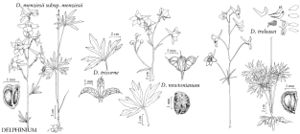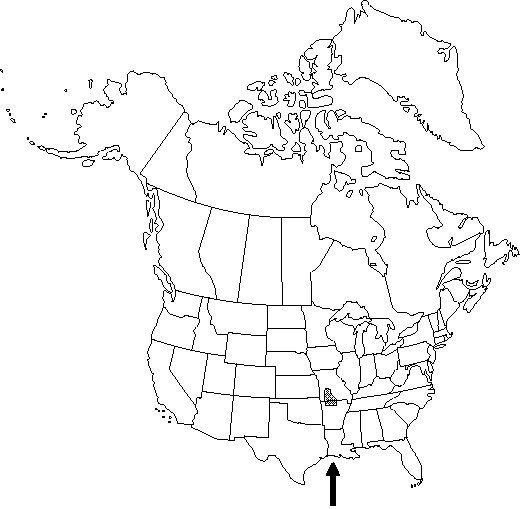Difference between revisions of "Delphinium treleasei"
Minnesota Bot. Stud. 2: 444. 1900.
FNA>Volume Importer |
imported>Volume Importer |
||
| (One intermediate revision by the same user not shown) | |||
| Line 55: | Line 55: | ||
|publication year=1900 | |publication year=1900 | ||
|special status=Endemic;Illustrated | |special status=Endemic;Illustrated | ||
| − | |source xml=https:// | + | |source xml=https://bitbucket.org/aafc-mbb/fna-data-curation/src/2e0870ddd59836b60bcf96646a41e87ea5a5943a/coarse_grained_fna_xml/V3/V3_713.xml |
|genus=Delphinium | |genus=Delphinium | ||
|section=Delphinium sect. Diedropetala | |section=Delphinium sect. Diedropetala | ||
Latest revision as of 22:50, 5 November 2020
Stems (40-)60-80(-110) cm; base reddish, glabrous, glaucous. Leaves mostly basal; basal leaves 3-7 at anthesis; cauline leaves 1-3 at anthesis; petiole 0.5-19 cm. Leaf blade round to reniform, 0.5-8 × 2-20 cm, glabrous; ultimate lobes 3-35(-56), 5 or more extending more than 3/5 distance to petiole, width 2-6 mm (basal), 0.5-2 mm (cauline), widest at middle or in proximal 1/2. Inflorescences 5-30(-56)-flowered; pedicel (1-)2.5-7(-11) cm, glabrous; bracteoles 1-7(-46) mm from flowers, blue or green, awl-shaped, 1.5-4(-12) mm, glabrous. Flowers: sepals dark bright blue, usually retaining color upon drying, nearly glabrous, lateral sepals spreading, (10-)12-17(-20) × 4-8(-10) mm, spurs straight, ascending ca. 45°, 15-17 mm; lower petal blades ± covering stamens, 5-8 mm, clefts (1-)3-5 mm; hairs centered, densest above base of cleft, yellow. Fruits 12-18(-22) mm, 3-4 times longer than wide, glabrous. Seeds unwinged; seed coat cell surfaces smooth. 2n = 16.
Phenology: Flowering late spring.
Habitat: Open juniper glades on calcareous substrate
Elevation: 250-450 m
Discussion
Delphinium treleasei is locally abundant but extremely limited by microhabitat within its distributional range.
Hybrids between Delphinium treleasei and D. carolinianum subsp. carolinianum are known.
Selected References
None.

